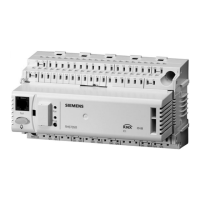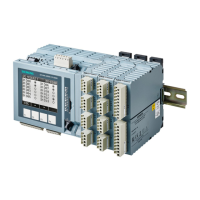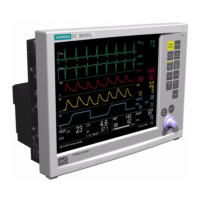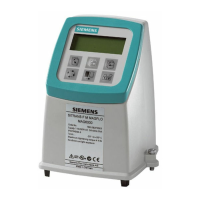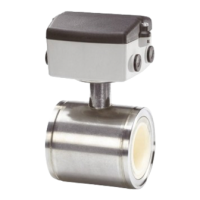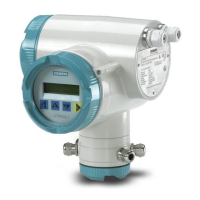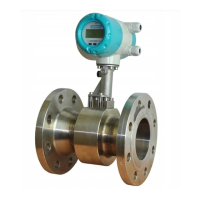Fire Safety & Security Products
Building Technologies
1583_o_en_−−_5
73
08.2005
Only relevant with software variant ’Germany’ / ’Czechia’ / ’Slovakia’ and ’Luxembourg’ only with VdS-card K3L070
HM at fire, activation: 1. single activ
Sel.# ch.? 2. multiple 3. cont. activ
− to define activation mode of Hauptmelder
Duration of HM activation ####/10 sec.
(min 2, max 4000/10 sec) change?
− to define activation time of Hauptmelder 0.2..200sec (default = 6sec)
value 2 = 0.2sec / 2000 =
200sec
Supervision time of ’UE activated’
Selected: ####/10 change?
− to define supervision time of Hauptmelder 1..59sec (default 5.9sec)
value 1 = 0.1sec / 59 = 5.9sec
Feedback ’UE activated’ opens FSD
1. Yes 2. No Selected: # ch?
− to define subsequent function of Hauptmelder
FSD−sabotage act. 1. FAULT 2. SABO
Selected: # ch? 3. INFO 4. TRIG only
– to define FSD-Sabotage
FSD−sabo activ. UE 1. if UE is enabled
Sel.: # ch? 2. if UE is disabled
– to define FSD-Sabotage
RT−fault ACTIVE until: 1. acknowledge
> selected #, change? 2. reset
− to define at what stage the output ‘remote
transm. FAULT’ shall become inactive
1. active until ‘acknowledge’
2. active until ‘reset’
fault SELF−HOLDING: 1. active
> selected #, change? 2. inactive
− to define whether faults from external devices
(detector lines. etc.) shall remaine until RE-
SET
1. all fault messages must be
reset
2. faults disappear when re-
stored (except ‘system faults’
must still be reset)
REMINDER beep on FAULT+OFF 1. inactive
> selected #, change? 2. active
− to activate buzzer periodically upon ‘fault’ and
disabled ‘RT-alarm’
1. no reminder tone
2. beep 1sec every 5min
mains power fault DELAY: ##:##:##
(5 sec...48 hours) change to?
– to define fault initiation upon mains failure 00:00:00
h/min/sec range 5sec....48h
TERMINATE detector TEST: 1. manually
> selected #, change? 2. via timeout
− to define the duration of mode ‘detector TEST’ 1. active until mode is cancelled
via operating menu
2. active for 2 hours after
− the detector was set in test alarm
mode
− test alarm
− reset test alarm
operating ACCESS: 1. always 2. key
> sel. #, ch? 3. password (=####)
− to define how the ‘operating access’ is pro-
vided (no multiple choice possible)
1. permanent access
2. access via key-lock switch
(requires optional key-lock
switch)
3. access via password ‘0055’
acknowledge ACCESS: 1. always
> sel. #, ch? 2. password / key
− to define access level to key
ACKNOWLEDGE
1. ACK always possible
2. ACK only via passw./key
disabling > MANUAL zones BLOCKED: 1. no
> seleceted #, change? 2. yes
− to define restrictions to the disable function of
manual zones
1. no restriction
2. manual zones cannot be dis-
abled
disabling > ALL zones RESTRICTED: 1. no
> selected #, change? 2. yes
− to define restrictions to the disable function of
all zones
1. no restriction
2. max. 1 zone can be disabled
at the time
Supervise BMS communication 1. no
selected #, change? 2.yes
– to define whether BMS has to be supervised
or not
prevent commands from BMS 1. no
selected #, change? 2.yes
– to define whether BMS accept commands
from external
BMS message on 1st Multi−2 fire 1. no
selected #, change? 2.yes
− to define whether 1st alarm of a zone type
Multi-2 to be send to BMS
PRINTER: 1.A4−portait 2.A4−landsc
> #, ch? 3.CS−logger
− to define printer type 1. standard printer with printout
format ‘A4 vertical’
2. standard printer with printout
format ‘A4 horizontal’
3. Cerberus printer B2Q191
PRINTER: setting serial port
> sel: ##,##,##,## > ch?
(baud: 12,24,48,96 / parity: 00,01,02)
(data bits: 07, 08 / stop bits: 01,02)
− to define printer parameters baudrate:
12=1200...96=9600
parity:
00=none/01=odd/02=even
data bits: 7 = 7 / 8 = 8
stop bits: 01=1 / 02=2
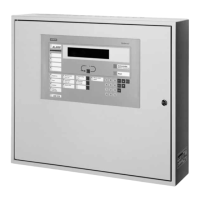
